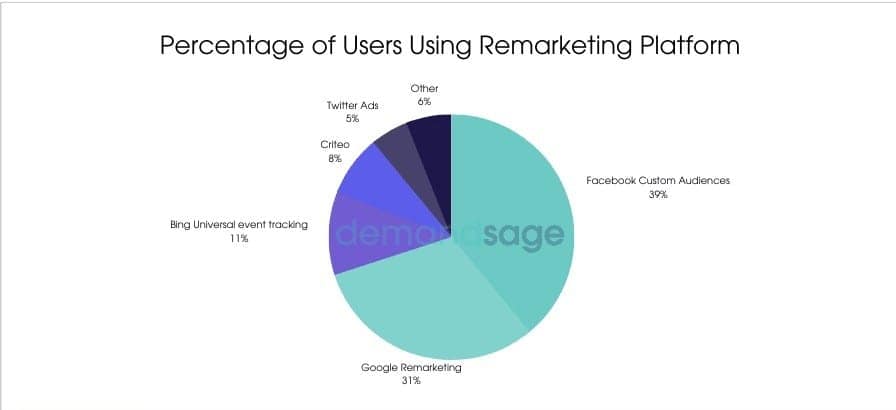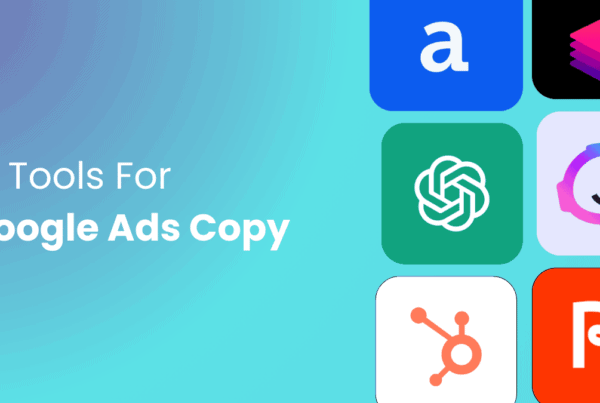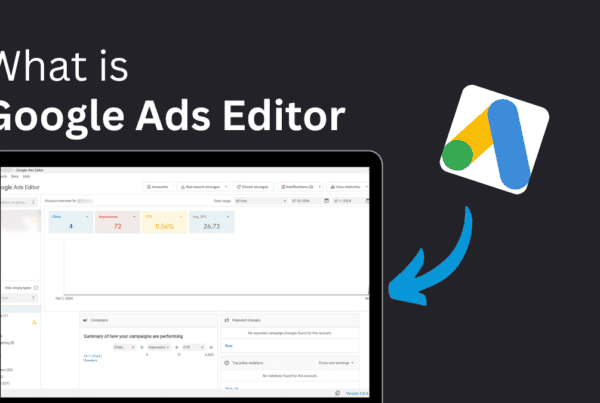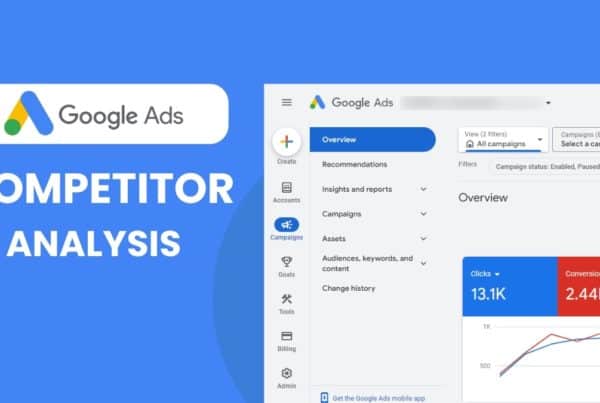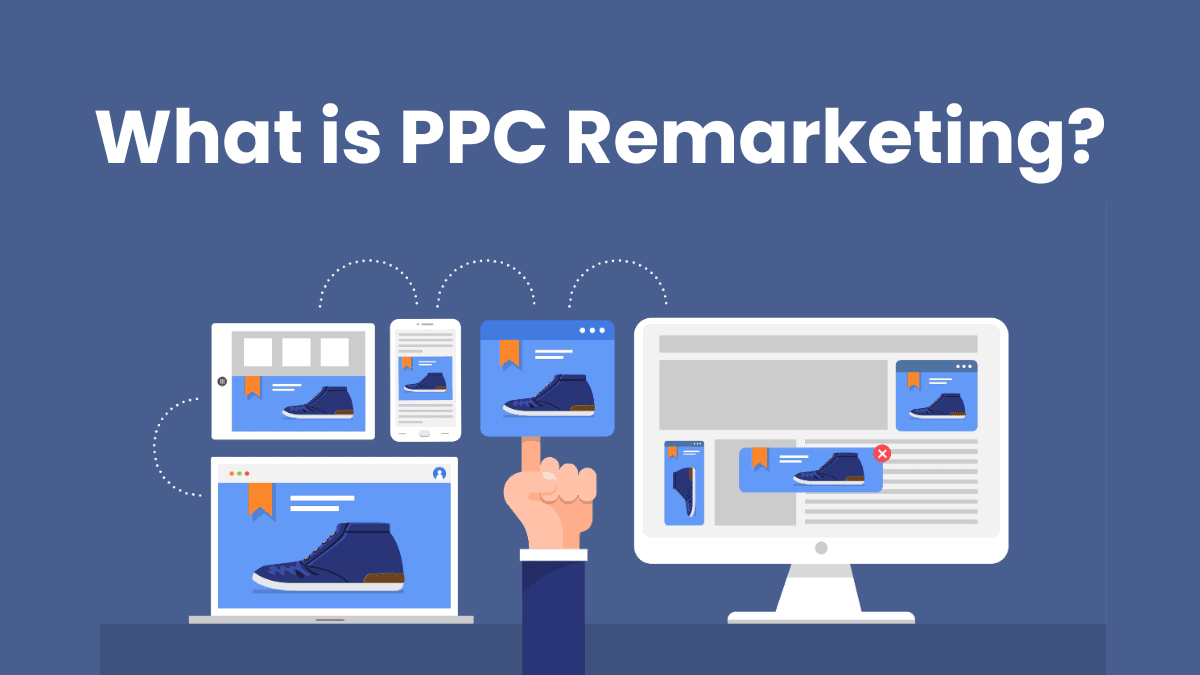
Have you ever noticed how some ads follow you around the internet? It might initially feel strange, but there’s a smart reason behind it. Many businesses struggle to bring back people who visit their website but don’t take action, like buying a product or signing up for something. This can be frustrating, especially when so much effort goes into attracting those visitors in the first place.
Go Squared says that for most websites, only 2% of visitors make a purchase or take action on their first visit. That’s where PPC remarketing comes in! It’s a clever way to reconnect with people who’ve shown interest in your business but didn’t take the final step.
In this blog, we’ll walk you through what PPC remarketing is, how it works, and how it can help you make the most out of your marketing efforts. Let’s dive in and make this topic simple and fun to learn!
What is PPC Remarketing?
PPC remarketing is a way of showing ads to people who have already visited your website or interacted with your business online. It’s like giving them a gentle reminder about your products or services to bring them back to your website. It has been observed that remarketing brings 26% of users back to a website. 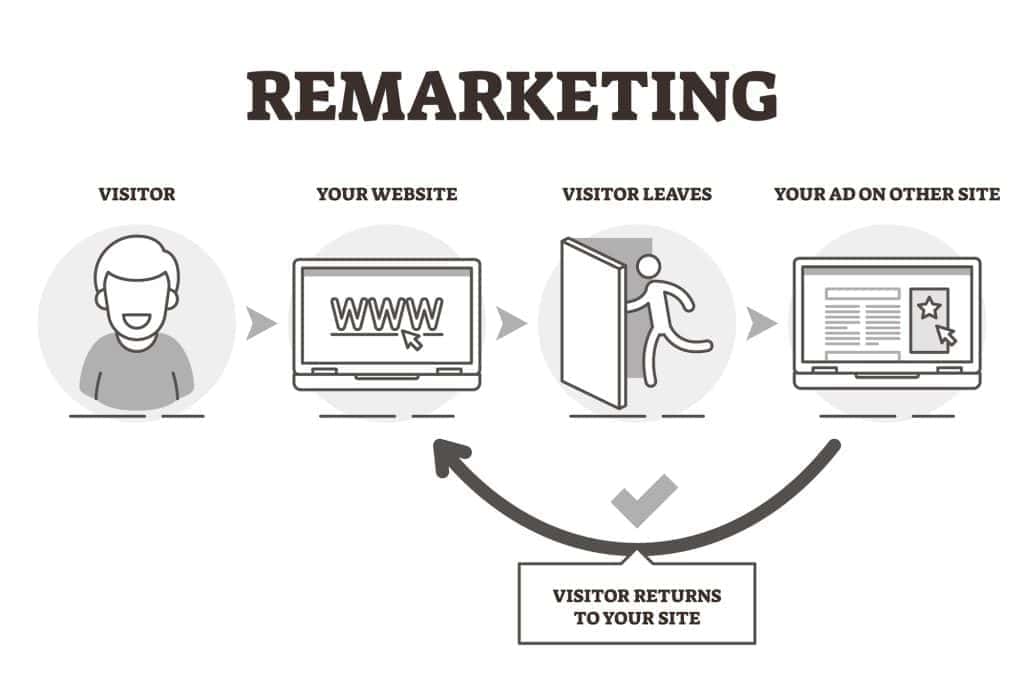 For example, if someone looks at a pair of headphones on your site but leaves without buying, PPC remarketing can show them an ad for those headphones while they browse other websites or use social media. This keeps your business fresh in their minds and encourages them to take another look.
For example, if someone looks at a pair of headphones on your site but leaves without buying, PPC remarketing can show them an ad for those headphones while they browse other websites or use social media. This keeps your business fresh in their minds and encourages them to take another look.
PPC remarketing has come a long way since it first started with Google Ads in 2010. It often works by using customer data. It targets people based on their past actions, like what they viewed, clicked, or added to their cart. It’s not about finding brand-new customers but about reaching people who are already familiar with your business.
This strategy helps businesses target people who are more likely to buy because they’ve already shown interest. In fact, about 79% of people say they only pay attention to offers that are related to their past interactions with a business.
With remarketing ads, you can show these people things like discounts, new products, or personalized suggestions to encourage them to come back and finish their purchase.
In simple terms, PPC remarketing helps you stay connected with potential customers and reminds them why your products or services are worth their attention!
How Does PPC Remarketing Work?
You might have noticed a cookie box pop up when you visit a website, asking you to “accept” or “decline”? When you click “accept,” you’re giving the website permission to track your visit. This tracking is done using a small piece of code called a cookie, which helps the website show you ads later based on your visit. Here’s how it works:
When you visit a website, this cookie is added to your browser. It doesn’t collect personal information like your name or address. Instead, it simply tracks that you visited the site. As you continue browsing other websites, the cookie helps display ads from the original site you visited.
Tools for remarketing
- Google: Google offers many tools to help with remarketing, such as Google Analytics and Google Ads. These tools can track where visitors are from, how long they stay on a site, and what pages they view. With features like standard remarketing, dynamic remarketing, and video remarketing, you can create customized ads to target specific visitors.
- Microsoft: Microsoft’s advertising platform also provides remarketing tools. You can create lists to target people based on their behavior, like abandoning their shopping cart. It also allows targeting based on demographics such as age, gender, and location.
- Meta: According to Demandsage 80% of small businesses run remarketing campaigns on social media, and what can be better than Meta. Meta uses a tool called the Meta Pixel (formally Facebook Pixel). Unlike cookies, which track devices, the Pixel tracks people. For example, if someone visits your website on three different devices, cookies count it as three separate visits. Meta Pixel combines this data to understand it’s the same person, making the ads more personal and accurate.
Why Remarketing Matter?
Not everyone who visits your site will buy something on their first visit. They might need more time to decide or could get distracted. Remarketing acts as a friendly reminder, keeping your products or services visible to them as they browse online.
42% of businesses use remarketing to help people recognize their brand. This visibility builds familiarity, helping potential customers remember your brand. Studies show that remarketing can increase conversions by up to 70%.
Since only about 2% of website visitors make a purchase initially, remarketing gives you the chance to win over the other 98%.
Remarketing is like gently urging people to come back and consider your business again. It’s a smart way to stay in their minds and boost your chances of making a sale.
PPC Retargeting VS. PPC Remarketing VS. PPC Prospecting
You might hear terms like remarketing, retargeting, and prospecting. They may sound similar, but they each have a unique role in connecting with people online. Let’s see how they are different:
PPC remarketing
Remarketing is all about reaching out to people who have already bought something from you or interacted with your business.
For example, if someone buys a phone from your store, you can use ads to recommend phone accessories they might like. It helps build strong relationships and keeps your customers coming back.
PPC retargeting
Retargeting is focused on people who visited your website but didn’t take action, like making a purchase.
Let’s say someone looks at a pair of sunglasses on your site but leaves without buying. Retargeting shows them ads for those sunglasses on other websites or social media, giving them a nudge to return and complete the purchase.
PPC prospecting
Prospecting is about finding brand-new people who haven’t visited your website yet but might be interested in what you offer.
For instance, if you sell fitness gear, you can target ads to people who follow fitness influencers online. The goal is to attract these new potential customers and bring them to your website.
Each of these strategies works in its way to connect with your audience at different stages. Together, they help businesses grow and reach the right people at the right time!
The Benefits of Remarketing Ads
Remarketing ads come with plenty of advantages that can boost your online marketing strategy. Let’s break down why they are worth using:
1. Remarketing ads are powerful tool
Remarketing ads are super effective. For example, businesses that use these ads often see impressive results. Some studies show that remarketing can increase the efficiency of your ads by over 1,000%. Imagine spending $1 on ads and getting back more than $10 in return. That’s a strong reason to consider remarketing as part of your marketing efforts.
2. Connect across different platforms
One of the best things about remarketing is that you can use it on various platforms. For example, you can:
- Use Google Ads to reach people searching for products.
- Create MetaAds to connect with your social media audience.
- Run LinkedIn Ads to target professionals.
This flexibility allows you to reach people wherever they spend their time online. By meeting them where they are, your chances of getting noticed and clicked on go up.
3. Build brand awareness
Have you ever noticed an ad that keeps showing up, and eventually you remember the brand? That’s the power of remarketing! People usually need to see a brand several times before they remember it. With remarketing, you can make sure your potential customers see your ads repeatedly, helping them keep your brand in mind. This can lead to more sales later on.
4. Target people based on their actions
Remarketing lets you focus on people who have already shown interest in your business. For example, you can:
- Show ads to someone who visited your site but didn’t buy anything.
- Remind people about the items they left in their shopping cart.
- Reach out to visitors who came to your website multiple times without making a purchase.
By targeting these groups, you can create ads that speak directly to their needs and encourage them to take the next step.
5. Cost-effective advertising
Remarketing is a budget-friendly way to advertise. Since you’re focusing on people who already know about your brand or products, you’re less likely to waste money on ads that no one cares about. Plus, you can set your own budget and adjust it anytime to fit your needs.
6. Stay optimized automatically
Many platforms, like Google Ads, use smart technology to make sure your ads are shown to the right people. For example, if someone is more likely to buy your product based on their past behavior, the platform will automatically prioritize showing your ad to them. This saves you time and helps your ads perform better.
7. Bring back customers and create opportunities
Remarketing helps you reconnect with people who may have forgotten about your brand. For instance, you can:
- Encourage inactive customers to return.
- Remind people about their abandoned shopping carts.
- Offer special deals to those who are unsure about buying.
- Invite customers to check out an online event or sale.
Remarketing ads ensure that your business stays in the minds of potential customers, making it easier to build lasting relationships with them.
Types of Remarketing
Remarketing comes in several different forms, and each type has its own unique benefits. Here are the main types of remarketing:
1. Standard remarketing
Standard remarketing shows ads to people who have visited your website before. These ads appear as banners or text ads while they browse other websites. The ads stay the same for everyone and don’t change based on their behavior.
Example: If someone visits a clothing website, they might later see ads for that website while reading the news online.
Benefits:
- Keep your brand visible and familiar.
- Simple to set up and manage.
- A cost-effective option for small businesses.
2. Dynamic remarketing
Dynamic remarketing takes personalization to the next level. These ads are tailored to show products or services that a person views on your website.
Example: If someone looked at sneakers on your site but didn’t buy them, they might see an ad showing the same sneakers when they’re browsing another website.
Benefits:
- Shows highly relevant ads.
- Great for reminding people about items they are interested in.
- Helps recover abandoned shopping carts.
3. Remarketing lists for search ads
RLSA is a special type of remarketing available on Google Ads. It targets people who have visited your website and later search for specific keywords on Google.
Example: A user visits your online shoe store but doesn’t buy anything. Later, when they search for “running shoes” on Google, your ad can appear at the top of the search results.
Benefits:
- Helps reach people actively searching for products you offer.
- Allows for more precise targeting based on past behavior.
- Lets you adjust your bids for better visibility.
4. Video remarketing
This type of remarketing uses video ads to re-engage people who have interacted with your website. These ads often appear on platforms like YouTube.
Example: If someone visits your fitness site, they might see a YouTube ad about your workout programs.
Benefits:
- Tell your brand’s story in an engaging way.
- Helps people remember your brand.
- Builds trust through visuals and real-life examples.
5. Social media remarketing
Social media remarketing targets people on platforms like Facebook, Instagram, LinkedIn, or Pinterest. These ads show up as sponsored posts while users scroll through their feeds.
Example: If someone browsed a product on your website, they might later see a related ad while scrolling on Instagram.
Benefits:
- Reaches people where they spend a lot of time.
- Offers various ad formats like videos, images, or carousel ads.
- Lets you connect with people through interactive and creative content.
6. Customer lists remarketing
This type uses your customer’s contact information to show them targeted ads. You can upload a list of email addresses or phone numbers to platforms like Google or Facebook to reconnect with your audience.
Example: A store sends ads for exclusive deals to its email subscribers while they browse social media.
Benefits:
- Targets loyal customers and subscribers.
- Great for upselling or promoting special offers.
7. Display remarketing
Display remarketing shows your ads on websites that are part of the Google Display Network or similar platforms. It targets people who have visited your website but left without taking action.
Example: If someone visits your bakery’s website, they might later see ads for your cakes while visiting a recipe blog.
Benefits:
- Expand your reach to various websites.
- Increases chances of re-engaging potential customers.There are a few more types like Mobile App Remarketing and Email Remarketing but these are entangled with one or more from above. By understanding these types of remarketing, you can choose the best strategy to connect with your audience and guide them back to your business.
How to Perform PPC Remarketing: A Step-by-Step Guide
Here’s a simple, beginner-friendly guide to help you set up a successful remarketing campaign:
Step 1: Collect data with tracking cookies
- Install a tracking code (like Google Analytics or Facebook Pixel) on your website.
- When someone visits your site, a cookie is stored in their browser.
- This cookie tracks their activity without storing sensitive information and helps you show relevant ads later.
Step 2: Segment your audience
- Group your visitors into categories based on their behavior, such as:
- People who viewed certain pages.
- Visitors who added items to their cart but didn’t buy.
- Customers who purchased before.
This ensures your ads are highly targeted and relevant.
Step 3: Choose a remarketing platform
- Google Ads: Ideal for reaching people across websites and apps.
- MetaAds: Use the Facebook Pixel to target people on Facebook and Instagram.
- Microsoft Ads: Great for specific audience filters like demographics.
Step 4: Decide on the type of remarketing ads
- Standard remarketing: Show ads to people browsing websites and apps.
- Dynamic remarketing: Show ads for products or services they viewed.
- Video remarketing: Use video ads on platforms like YouTube.
- Email remarketing: Target people on your email list with ads.
- Mobile app remarketing: Focus on users browsing on mobile or using your app.
Step 5. Create engaging ads
Use eye-catching visuals and simple messages. Match the ad content to your audience’s behavior. For example:
- Show discounts for cart abandoners.
- Recommend related products to previous buyers.
Step 6: Set up your campaign
- Go to your chosen platform and create a new campaign.
- Upload your audience list and ads.
- Adjust settings like location, budget, and frequency of ads.
Step 7: Test and optimize
Run your ads and monitor their performance. Look at metrics like:
- Clicks: How many people clicked your ad.
- Conversions: How many people completed an action (like buying).
- Cost: How much you’re spending per conversion.
Test different ad designs and audience settings to see what works best.
Step 8: Focus on landing page optimization
- Make sure the page people land on after clicking your ad is clear and easy to navigate.
- Include relevant information and a strong call to action (e.g., “Buy Now” or “Sign Up”).
Step 9: Monitor and improve over time
- Keep checking your campaign results and make changes as needed.
- Adjust your bids, audience settings, and ad frequency to maximize performance.
PPC Remarketing Success Stories
Many businesses across different industries use remarketing, and the results are often amazing. Here are some real-life examples to show how it works and why it can be so effective:
World First
World First, a well-known currency exchange service in the UK, used remarketing to cut their cost per acquisition (CPA) by an incredible 99%. They also saw a 105% increase in full account signups in Australia. This shows how remarketing can make a big difference in reducing costs and bringing in more customers.
Watchfinder
Watchfinder, a company specializing in luxury watches, used Google Analytics and remarketing ads to achieve an amazing 1,300% return on investment (ROI). Their remarketing campaigns also had CPAs that were 34% cheaper than regular search campaigns. These numbers highlight how powerful remarketing can be when done strategically.
VAPE
VAPE, an Italian insect repellent brand, used remarketing to reach different groups like outdoor enthusiasts, parents, and sports lovers. They tailored their ads to these groups and achieved over 50 million impressions and 422,000 interactions. Remarketing also helped them attribute 51% of their total sales to this campaign.
SpoonfulONE
SpoonfulONE, a baby nutrition brand, used Amazon remarketing tools to increase its audience and attract new customers. By combining display ads with other ad types, they discovered that people exposed to both had a 3x higher purchase rate compared to those who only saw one type of ad. This strategy helped them boost their sales significantly.
TENZING
TENZING, a UK-based energy drink brand, used Amazon DSP remarketing campaigns to raise brand awareness. Their goal was to achieve a 0.2% detail page view rate (DPVR), but their remarketing ads reached as high as 0.47% DPVR, far exceeding expectations.
Noble House Home Furnishing
Noble House, a furniture company, used remarketing campaigns to target shoppers who visited their website but didn’t buy anything. These campaigns led to a 28% increase in new customer purchases, showing how remarketing can bring back potential buyers.
Lumension
Lumension, a global leader in endpoint security software, boosted its lead generation by 81% and grew targeted influencer traffic by 10% by collaborating with other media sites to retarget visitors who had shown interest in its competitors.
These examples show that PPC remarketing works for all kinds of businesses, whether it’s selling furniture, watches, or even insect repellant. Remarketing helps brands reconnect with potential customers, reduce costs, and boost sales. If these companies can achieve such impressive results, imagine what it could do for your business!
Conclusion
PPC remarketing is a great way to bring back people who’ve already visited your website. Even if they’ve been your customer before, you can still encourage them to return and buy again. By showing them ads based on their interests, you can remind them about your products or services.
In the future, PPC remarketing will be even more important for businesses to stay connected with customers. It’s a useful tool for anyone learning digital marketing and can help grow your business by keeping customers coming back.
FAQs
What does PPC mean in marketing?
PPC stands for “Pay-Per-Click,” which is a form of online advertising where businesses pay each time someone clicks on their ad. It’s a way to drive traffic to websites by bidding for ad space on search engines and other platforms.
How do you use retargeting in a PPC campaign?
Retargeting in PPC involves showing ads to people who have already visited your website but didn’t make a purchase. This helps remind them about your products or services and encourages them to come back and complete the action.
Is PPC marketing worth it?
Yes, PPC marketing is worth it if done correctly. It can help drive targeted traffic to your website, increase brand visibility, and improve conversions. It’s a great way to reach potential customers quickly.
What are the disadvantages of PPC Remarketing?
Some disadvantages of PPC remarketing include the cost of ads, the possibility of ad fatigue (where people see the same ads too often), and the need for careful targeting to avoid wasting money on irrelevant clicks.

